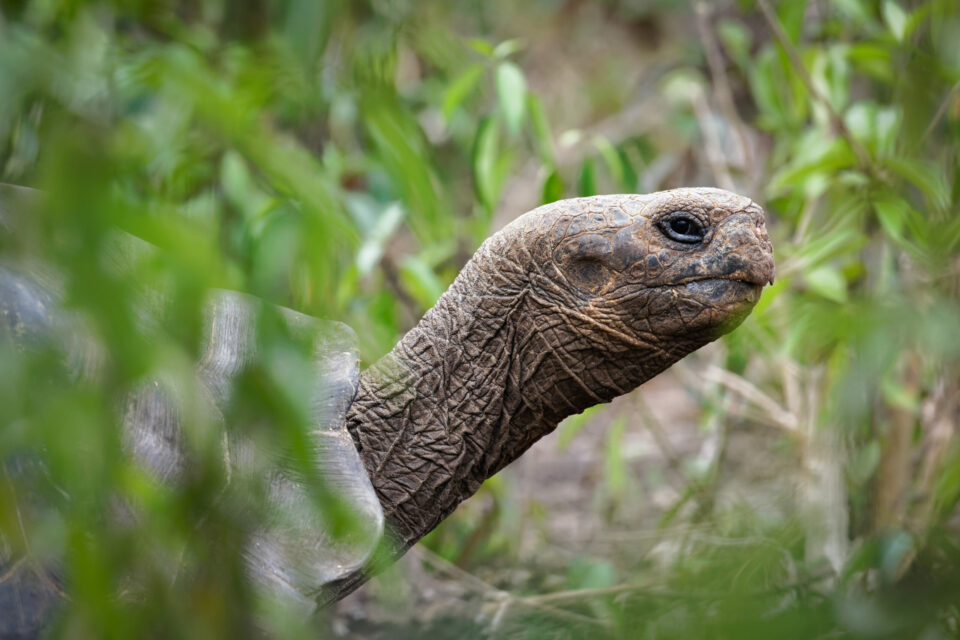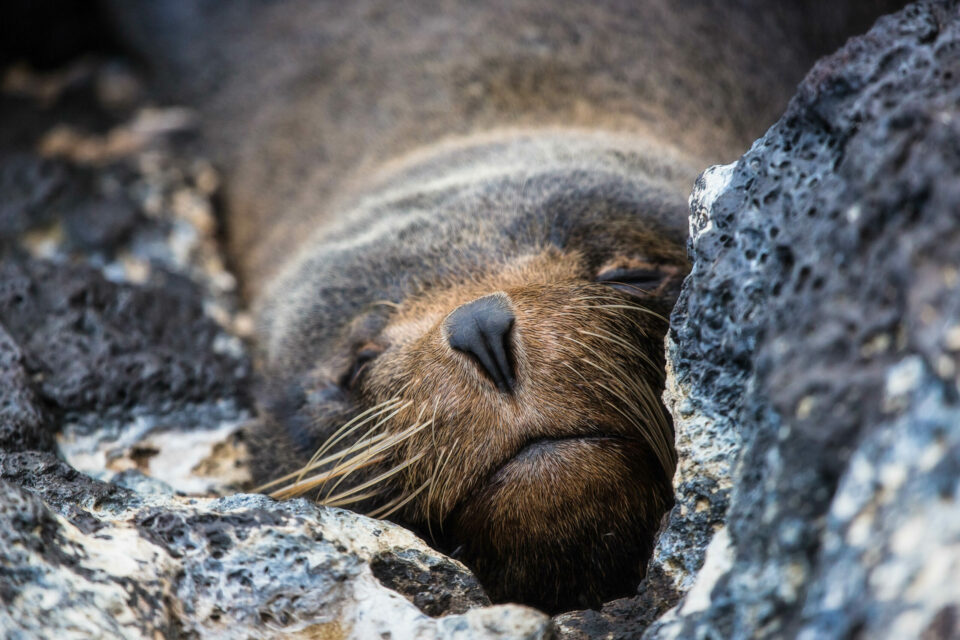
Common name:
Galapagos sea lion
Scientific name:
Zalophus wollebaeki
Spanish name:
Lobo marino
Conservation status:
Endangered
Average lifespan:
15 – 20 years
Average size:
1.5 metres (females) / 2 metres (males)
Maximum size:
2 metres (females) / 2.5 metres (males)
Average weight:
80 kilograms (females) / 250 kilograms (males)
Maximum weight:
110 kilograms (females) / 400 kilograms (males)
Overview
The Galapagos sea lion is a species that primarily breeds in the Galapagos Islands, although some breeding colonies also occur on Isla de la Plata just off mainland Ecuador. They are one of two types of seal found in Galapagos and are part of the eared seal family, having external ear pinnae. They are not ‘true’ seals, as they are able to rotate their hind flipper under their pelvic girdle and lack the characteristic long, finger-like claws of true seals. The configuration of their pelvic girdle allows them to ‘gallop’ across land, reaching speeds exceeding that of a running person on rocky terrain.
There is a large degree of sexual dimorphism, with males weighing up to four times that of females. The males also have a prominent bump on their forehead, making them easy to distinguish from the females. All members of this species have brown or grey fur, females generally being a lighter shade than males, and newborn pups are chestnut brown. The sea lions have a smooth and streamlined body shape, making them efficient hunters, especially of sardines which are their main prey. They can dive to depths of up to almost 600 metres and can stay underwater for over ten minutes. They spend a lot of their time resting on beaches or playing, and are generally inquisitive.
Galapagos sea lions in Galapagos
Photo gallery
Click an image to view larger

How you can help
Please help us conserve the endangered wildlife of Galapagos by donating today or by adopting a sea lion.
Read more about Galapagos sea lions...


Symbiotic relationships in Galapagos

My Galapagos Experience










